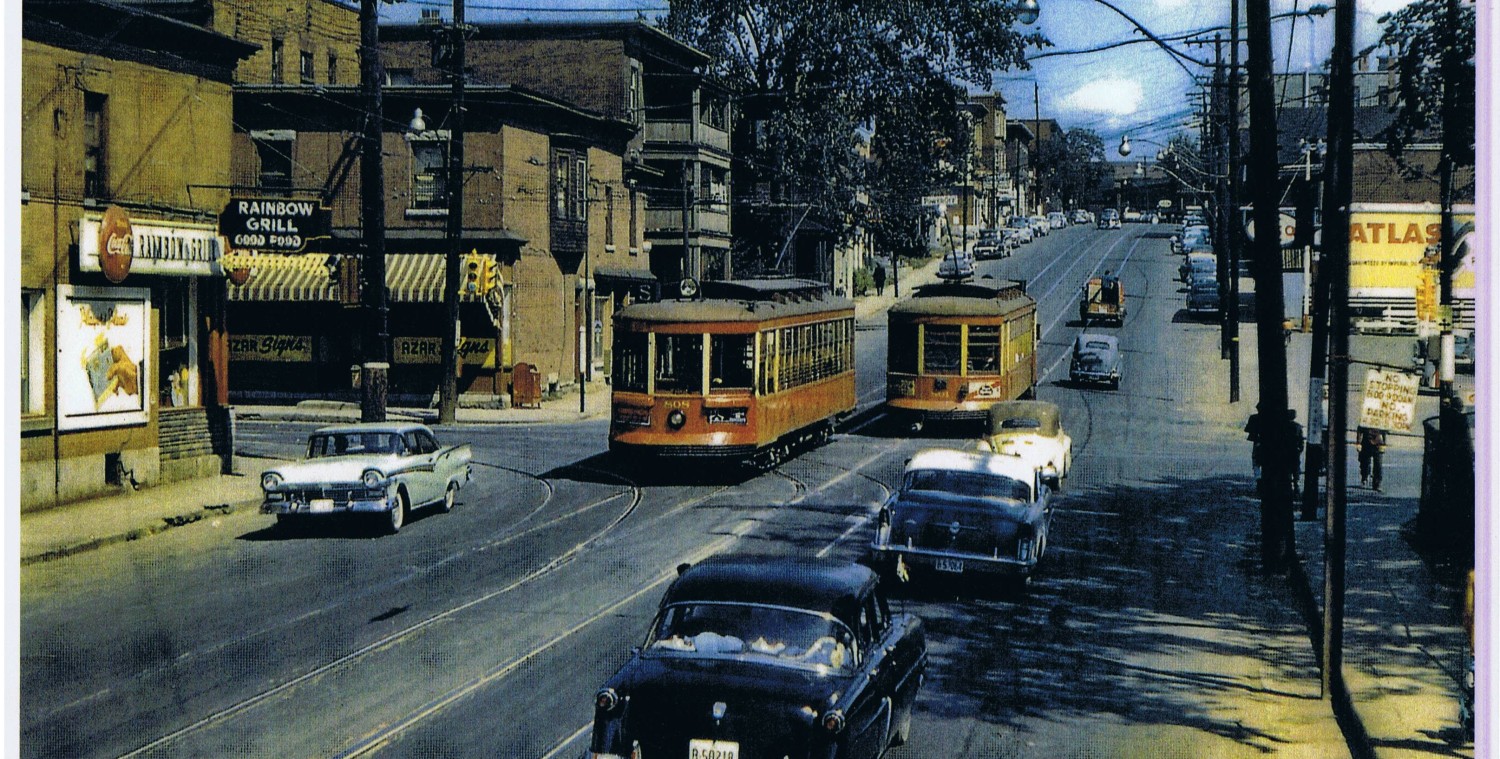What elements would make up Eric’s ideal bus stop? This one will get us nicely started. 
It has a distinctive shape and colouring suitable for the place. It doesn’t have glass walls, but in this location it didn’t need them much. In Ottawa, we’d need glass side walls.
The roof provides sun and rain shelter. There’s a bench. Off to the right, a working, clean water fountain, albeit without a doggy bowl at its base. Nice, decorative floor paving helps celebrate the sense of place. There’s a sturdy bulletin board and schedule display. A decorative (not chain link) back fence to help contain the area. Nice landscaping, right out the street. Mulch.
Two bike posts. In this area, where bus routes stick to the main roads and most side streets are dead ends, distances to the bus stop can be long and bike racks at city and school bus stops were usually in use.
The entire design is cohesive and clear branding, and makes waiting for the bus more than a standing-forlornly-at-the-side-of-the-road -while-the-lucky-ones-whiz-by-in-a-car experience.
Further along was a rest stop along the sidewalk. Nice paving, benches, garbage can, and two bike racks, not even at a bus stop but a resting point en route.
Here’s another bus stop elsewhere. The shelter is pleasantly set back from the road (although I think the angle of the shelter is wrong for direction of travel). Garbage can. Bench. Roof. Glass walls. Bike racks. Solar panel to power the roof light. Decorative sidewalk that makes you feel like more than an afterthought.
Here’s a bus stop in yet another town (below). It is along a busy roadway, in front of a Walmart and grocery store lots. City buses there don’t go into malls, they stay on periphery roads. Users must hike out, often with no sidewalk or direct path, to the roadside bus shelter. But look at the size of that shelter, its HUGE, to handle a crowd. When was the last time OC Transpo doubled up a shelter to handle a busy roadside bus stop?
Ottawan’s have some nice transit stations, and some not so nice. Some are adequate to their function, some are not. The point of these pictures isn’t to say we need to copy these designs, but to see what others do, and be inspired to do better if that is worthwhile. Unfortunately, the new LRT stations are being designed well out of the public eye by a secretive mayor Stephen Watson and we’ll just have to hope we will be pleasantly surprised in 2017.
Personally, I’m usually impressed by the wisdom of the crowd and too often left wide-eyed at the bought-and-paid-for advice of those who never use transit. There’s a reason real world businesses use focus groups. But only when the stakes are important.
__________________
THE last public advisory committee meetings on LRT station design were a long time ago, before we chose the final contractor. Back then, the designs included mostly-unheated stations (bad) and centre platforms (good). Over the years, I’ve asked our LRT office for examples of outdoor escalators in a cold climate, such as we are planning for Ottawa. Thus far they seem rare as hen’s teeth. There may be a reason. Someone I know went to Moscow, St Petersburg [while I went to the other St Pete’s], and Murmansk in December. They planned to use the subways and public transit a lot. I charged them to photograph some escalators coming up, outdoors. In four or five days of using Moscow’s extensive subway network, they couldn’t find any. They were all in heated glass enclosed structures. Many were down for repairs at a peak winter holiday season. Grit. I dunno if we are still planning outdoor escalators or if the designs now have indoor escalators, assuming we are having escalators at all. Personally, I thought the last designs had too many escalators for eg at Tunney’s and Pimisi, where walking a single flight of stairs would promote healthier citizens [there are elevators two, of course].








When I lived in Washington, DC 1999-2005, many stations relied on escalators and almost never were all the elevators in a given station working. None were exposed to the direct outdoors. They just aren’t reliable.